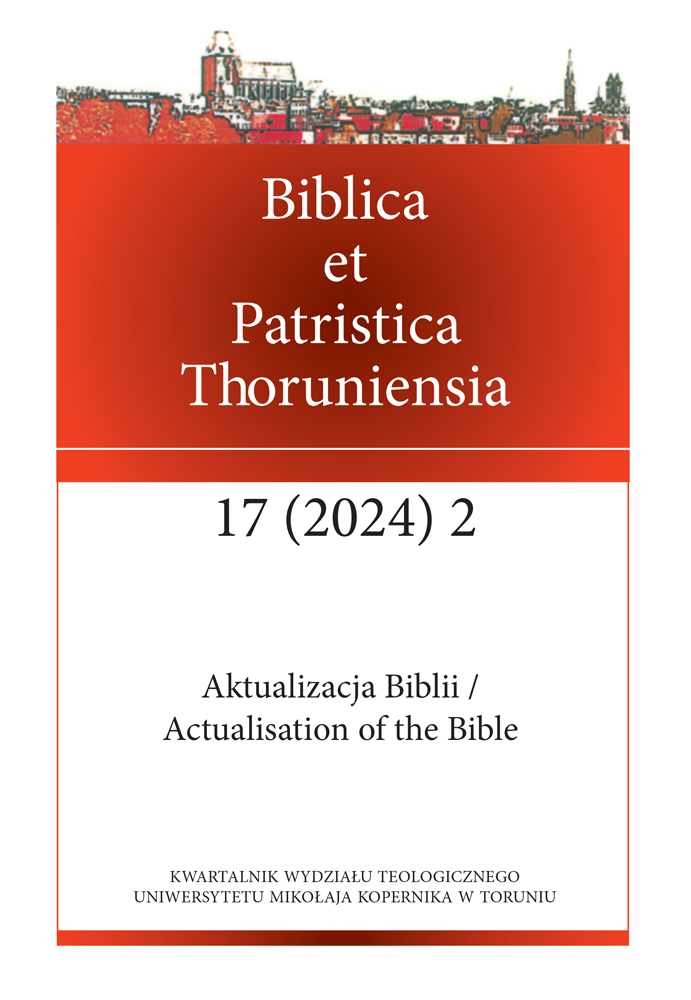Lawrence Dewan and Stephen Brock: about the Real Distinction between Form and Esse
DOI:
https://doi.org/10.12775/BPTh.2024.011Parole chiave
esse, essentia, real distinction, Thomas Aquinas, Lawrence Dewan, Stephen BrockAbstract
The main objective of this paper is to address the well-known issue, in the thought of Saint Thomas Aquinas, of the real distinction between form and esse in caused things. To achieve this, we present the approaches to the subject offered by Lawrence Dewan on the one hand, and Stephen Brock on the other. The first step is to highlight once again Fr Dewan’s discussion about form as a cause of being, a premise which is shared by Professor Brock. The second consists of showing how Fr Dewan and Brock start from different perspectives to base their arguments for this distinction. Thus, the article is divided into two parts, one part for each of the above items. As a result, we hope to clarify Aquinas’s real distinction between form and esse in caused things, due to the luminous contributions of these distinguished Thomists.
Riferimenti bibliografici
Brock, Stephen. n.d. “How Many Acts of Being Can a Substance Have? An Aristotelian Approach to Aquinas’s Real Distinction.” Academia. Accessed November, 2023. https://www.academia.edu/19053237/How_Many_Acts_of_Being_Can_a_Substance_Have_An_Aristotelian_Approach_to_Aquinas_s_Real_Distinction.
Brock, Stephen. 2016. “La forma tra la potenza e l'atto in Tommaso d'Aquino.” Aquinas 59, 1: 73–88.
Brock, Stephen. 2017. Estudios metafísicos. Selección de ensayos sobre Tomás de Aquino. Translated by Carlos Domínguez, edited and reviewed by Liliana Irizar and David Torrijos. Bogotá: Universidad Sergio Arboleda.
Brock, Stephen. 2020. La ontología de la forma en Tomás de Aquino. Translated by Liliana Irizar and Carlos Domínguez, edited by Liliana Irizar and Martha Peña. Bogotá: Universidad Sergio Arboleda.
Clavell, Lluís. 2015. “Philosophy and Sacred Text: Mutual Hermeneutical Help. The Case of Ex 3:14.” In Reading Sacred Scripture with Thomas Aquinas: Hermeneutical Tools, Theological Questions and New Perspectives, edited by Piotr Roszak and Jörgen Vijgen, 457–80. Turnhout: Brepols Publishers.
Dewan, Lawrence O.P. 1984. “St. Thomas, Joseph Owens, and the Real Distinction between Being and Essence”. The Modern Schoolman 61: 145–156.
Dewan, Lawrence O.P. 2006. “Saint Thomas and the Distinction between Form and Esse in Caused Things”. In Form and Being. Studies in Thomistic Metaphysics. Studies in Philosophy and the History of Philosophy, Volume 45, 188–205. Washington D. C.: Catholic University of America Press.
Dewan, Lawrence O.P. 2007. St. Thomas and form as something divine in things. The Aquinas Lecture 71. Milwaukee: Marquette University Press.
Gilson, Étienne. 1940. The Spirit of Mediaeval Philosophy. Translated by A. H. C. Downes. New York: Charles Scribner’s sons.
Irizar, Liliana and Lawrence Dewan O.P. 2015. Conversations with Fr. Dewan. Central metaphysical topics with Lawrence Dewan, O.P. Bogotá: Universidad Sergio Arboleda.
Irizar, Liliana., and Cristian Rodríguez. 2016. “Sobre el actus essendi y la virtus essendi en Tomás de Aquino: Una lectura desde la forma como principio del esse.” Freiburger Zeitschrift für Philosophie und Theologie 63 (1): 24–56.
Irizar, Liliana. 2017. “El esse, el ipsum esse y la naturaleza del ser.” In Brock, S. Estudios metafísicos. Selección de ensayos sobre Tomás de Aquino, 17–29. Bogotá: Universidad Sergio Arboleda; Universidad Eclesiástica San Dámaso.
Thomas Aquinas. 2013. Commentary on the Gospel of John Chapters 1–8. Translated by Fr. Fabian R. Larcher, O.P. Edited by The Aquinas Institute. Lander: The Aquinas Institute for the Study of Sacred Doctrine. E-text Latin-English Opera Omnia https://aquinas.cc/la/en/~Ioan
Thomas Aquinas. 2018. Summa Contra Gentiles Books I–II. Translated by Fr. Laurence Shapcote, O.P.: Green Bay-Steubenville: Aquinas Institute; Emmaus Academic.
Downloads
Pubblicato
Come citare
Fascicolo
Sezione
Licenza
Copyright (c) 2024 Cristian Rodríguez Carvajal, Liliana Irizar

Questo lavoro è fornito con la licenza Creative Commons Attribuzione - Non opere derivate 4.0 Internazionale.
CC BY ND 4.0. Posiadaczem prawa autorskiego (Licencjodawcą) jest Autor, który na mocy umowy licencyjnej udziela nieodpłatnie prawa do eksploatacji dzieła na polach wskazanych w umowie.
- Licencjodawca udziela Licencjobiorcy licencji niewyłącznej na korzystanie z Utworu/przedmiotu prawa pokrewnego w następujących polach eksploatacji: a) utrwalanie Utworu/przedmiotu prawa pokrewnego; b) reprodukowanie (zwielokrotnienie) Utworu/przedmiotu prawa pokrewnego drukiem i techniką cyfrową (e-book, audiobook); c) wprowadzania do obrotu egzemplarzy zwielokrotnionego Utworu/przedmiotu prawa pokrewnego; d) wprowadzenie Utworu/przedmiotu prawa pokrewnego do pamięci komputera; e) rozpowszechnianie utworu w wersji elektronicznej w formule open access na licencji Creative Commons (CC BY-ND 3.0) poprzez platformę cyfrową Wydawnictwa Naukowego UMK oraz repozytorium UMK.
- Korzystanie przez Licencjobiorcę z utrwalonego Utworu ww. polach nie jest ograniczone czasowo ilościowo i terytorialnie.
- Licencjodawca udziela Licencjobiorcy licencji do Utworu/przedmiotu prawa pokrewnego nieodpłatnie na czas nieokreślony
PEŁEN TEKST UMOWY LICENCYJNEJ >>
Stats
Number of views and downloads: 259
Number of citations: 0



